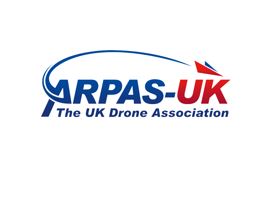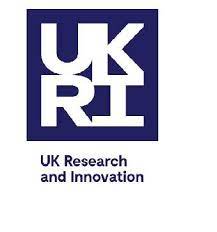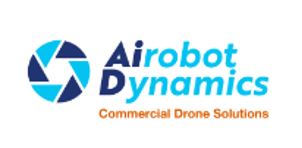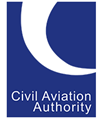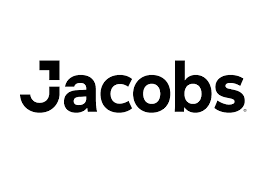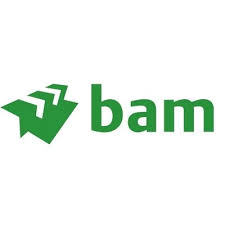The Regulators’ Pioneer Fund selects 24 Project with a value of £12million. ARPAS-UK is delighted to see that a number of members have been successful with the projects. Details of those projects involving drones, or with connections to the drone industry are listed below.
Project led by Argyll and Bute Council
Project name: West Coast of Scotland Trial for Integration of Manned and Unmanned Air Space
Argyll and Bute Council is collaborating with Skyports and Air Navigation Solutions Limited (ANSL), who provide Air Traffic Services under Licence to London-Gatwick Airport and Edinburgh Airport, to examine and establish a volume of airspace over the west coast of Scotland for a six-month period. During this time, the local authority and two companies will investigate the feasibility of the creation of a blanket area of low-density airspace over rural areas that would enable the safe integration of unmanned aircraft systems with general aviation/scheduled manned aircraft. This will require close working with the Civil Aviation Authority to look at ground breaking new regulations.
This project will be a foundational step towards unlocking UAV airspace in the UK without disenfranchising manned aviation and provide a network across the West Coast of Scotland, including inter island, to allow UAV trials for multi logistic delivery purposes.
Project led by the Care Quality Commission
Project name: Capturing innovation to accelerate improvement in health and social care
Health and social care is changing. So are we.
Project led by the Environment Agency
Project name: Using digital twin technology to enable low carbon industrial clusters
Our project will, for the first time, use world-leading digital twin modelling to help industry shape industrial clusters based on real-world environmental constraints –enabling rapid deployment to support energy security and sustainable economic growth. This is the first time that cutting edge digital twin technology has been used with environmental data to explore environmental limits and optimise decarbonisation technology in industrial clusters. The concept of ‘digital twins’ allows the creation of a digital representation of real-world places and systems. We can use a virtual counterpart of a real system to try different combinations of technology in places, providing invaluable early insight into environmental risks and informing and streamlining regulation.
We will use digital twin technology to simulate the operation of multiple low carbon technologies in an industrial cluster. Using the outcomes from this project we’ll explore opportunities for industry to work innovatively to mitigate environmental impacts and avoid costly delays in deployment. This provides an entirely new capability to “see the future” and shape it –leading to faster deployment timescales and lower environmental risk. We will work with local and national Environment Agency specialists, Microsoft and their digital partners, industry representatives and other UK environmental regulators to achieve this.
We will investigate how digital twin technology can be used as a positive tool to understand and plan to mitigate environmental limits as part of the overall ambition to facilitate the development of the first UK low carbon industrial cluster.
Project led by Greater London Authority
Developing a market based approach to enable significant SuDS investment through collaborative streetworks
Project led by the Health and Safety Executive
Project name: Enabling Innovation in Industrial SafetyTECH
Great Britain’s health and safety (H&S) performance has seen significant improvements over the last 30 years. However, Health & Safety Executive (HSE) statistics show that each year over a million workers are injured or made ill by their work. This affects individuals, families, employers, government and wider society.
Technology is changing rapidly and should be embraced to keep the workplace a safer and healthier place for all. Industrial Safetytech (IS) is the term for innovative technologies, products and services that are redefining approaches to H&S management. It can play a crucial role in promoting compliance to H&S legislation, especially for Small to Medium Enterprises (SMEs). However, regulations established to protect the public interest can become barriers to innovation. Addressing this potential regulatory barrier requires regulators and innovators to collaborate, to promote and stimulate emerging technology. This project employs a regulatory sandbox approach enabling experimentation with technological innovations. It benefits both regulator and industry, providing clarity to innovators on regulatory expectations and confidence to industry to invest in and adopt Industrial Safetytech.
HSE will lead this ground-breaking project in partnership with Safetytech Accelerator Ltd to generate practical evidence-based assessments of IS against regulatory frameworks in Construction. The project outcomes will support safe deployment of emerging technology providing confidence to large business and SMEs around IS adoption. This initiative will generate and harness new thinking, methods and technological approaches to improve regulatory delivery and performance, thus enabling innovative new products and services to come to market for the benefit of all.
Project name: Enabling innovation – piloting a multi-agency advice service for digital innovators
Project led by the Medicines and Healthcare products Regulatory Agency
Project name: Developing approaches to make AI algorithms more interpretable using AI as a medical device as an exemplar
Project led by the National Institute for Biological Standards and Control
Project name: Developing guidelines to accelerate innovation for microbiome therapeutics and diagnostics
Project led by the Office for Nuclear Regulation
Project name: Pilot of a regulatory sandbox on artificial intelligence in the nuclear sector
Regulators have an important role in minimising regulatory uncertainty around innovation and play a key role in enabling the adoption of innovative approaches and technologies. The Office for Nuclear Regulation’s (ONR) Innovation Hub is currently trialling a number of products for internal and external use to enable innovation in the nuclear sector where it is in the interest of society and is consistent with safety, security and environmental protection expectations.
Working with the Environment Agency, this project will pilot a regulatory sandbox process to support adoption of innovative technologies and approaches in the nuclear sector. Regulatory sandboxing is when regulators and industry work together in a non-regulatory environment to explore how innovative proposals can progress to deployment. Artificial intelligence (AI) has been chosen as the pilot topic and the project will focus on two potential applications in the nuclear sector. The pilot sandbox will enable innovators in AI to access regulatory advice in a safe space to derisk future deployment, while maintaining independence from regulatory decision making.
This would be the first application of a regulatory sandbox by nuclear regulators in the UK and the learning will be shared with key stakeholders and industry.
Project led by Wakefield Council
Project name: Navigating SMEs through the complexities of ‘Precautionary Allergen Labelling Risk Analysis’ through the use of innovative technologies
12-18 month projects
Project led by Birmingham City Council
Project name: Transport Regulatory Sandbox – Dynamic traffic management and digitisation of street spaces and traffic orders.
Project led by the Care Quality Commission
Project name: Driving innovation and accelerating improvement in medicines sustainability
Project led by the Care Quality Commission
Project name: Assessing Integrated Care System performance in understanding and responding to the health and care needs and experiences of people most likely to experience poorer care and inequalities
Project led by the Civil Aviation Authority
Project name: Hydrogen Challenge
To reach Net Zero flying by 2050, the aviation industry has been investing in the development of hydrogen propulsion solutions that offer the potential for no carbon emission flights. However, hydrogen as an aviation fuel is at an early stage of development. Industry does not have yet a comprehensive understanding of the risks to aviation safety, and what the right pathway towards certification is. To address these issues, the project will establish a CAA-led Regulatory Challenge on Hydrogen as aviation fuel. This Challenge will facilitate collaboration among the CAA, the aviation industry and academia to enhance the understanding of hydrogen-related risks to aviation safety, identify gaps in CAA policies, and propose recommendations to develop new net-zero policies.
This project will support the UK transitioning to a net zero economy, by supporting aviation industry and setting the scene in reducing any regulatory burdens on the introduction of hydrogen in aviation at a commercial scale. This project will also help to make the UK a world leader in the use of hydrogen in aviation, influence the development of future global standards, and create opportunities for investment.
Project led by Coventry City Council
Project name: Better local regulation to unlock the value of urban drones
The use of commercial drones in the urban environment has the potential to create enormous value to the UK economy, reduce carbon emissions, create jobs and save costs. However, when Coventry City Council took part in an urban airport demonstration, roads had to be closed when drones flew. With constraints like this, the full benefit of drones will not be delivered. While the aviation industry is working to develop airspace regulation that will permit the wider use of drones, this project will tackle non-aviation regulatory barriers to urban drone use enabling public and private organisations to deliver faster, safer, cheaper and with less impact on the environment. This will be done through a series of workshops with local authority regulators other regulators and stakeholders from transport, aviation and local potential beneficiaries. Each will be given the opportunity to benchmark from experience in other relevant projects in the UK and other countries.
A report of findings including a framework for implementation will be shared with other Local Authorities to allow the whole of UK to benefit. The proposal relates to the transition to a net zero economy, lower cost of living and levelling up.
Project led by the Environment Agency
Project name: Using data to improve efficiency and effectiveness of regulation of the water sector and stimulate innovation
Project led by the Financial Reporting Council
Project name: Company and Organisational Data Explorer (CODEx)
Project led by the Medicines and Healthcare products Regulatory Agency (MHRA)
Project name: Using High-fidelity Synthetic Data as synthetic control arms and to boost sample sizes in clinical trials
Project led by Milton Keynes City Council
Project name: Regulating Unmanned Aerial Vehicles within Smart City Environments
As part of our Smart City work, Milton Keynes City Council will work with Cranfield University’s Drone Innovation Hub and Satellite Applications Catapult Westcott DronePort to prove, trial, test and demonstrate new drone-based services that operate alongside our robotics delivery services and self-driving passenger shuttles. The18-month, Department for Business, Energy and Industrial Strategy-funded project builds on our reputation as an ‘urban laboratory’ and will use new technologies to create enhanced and differentiated services, benefitting the city and everyone in it and help create more high-tech, high-skill jobs for our people in anew and growing sector. By integrating our ground-and air-based services, we see opportunities to reduce traffic congestion, and the resultant carbon emissions, creating a healthier environment for all in line with our Net Zero ambitions. Beyond the environmental improvements, we see potential to transform the way services are delivered, for example in areas as diverse as high-speed, safe and secure package delivery, equipment or buildings inspections, or in terms of healthcare provision, for example to transfer vital medical equipment or supplies as part of an
Regulators’ Pioneer Fund Competition Brief6emergency response, by creating the ability to share real-time positional information. The project itself is designed to demonstrate the new technologies, show that they are safe, secure and reliable and aid the development of UK-wide regulation in this area. We plan to establish a testbed that allows ongoing experimentation and we believe our pioneering work will also create a blueprint for wider adoption and deployment, both within Milton Keynes and beyond.
Project led by Plymouth County Council
Project name: Maritime Regulatory Innovation Framework (MRIF) – Developing regulatory frameworks to support maritime innovation
Project led by Powys County Council
Project name: Intelligence Support for Private Sector Housing teams
Project led by the Scottish Environment Protection Agency
Project name: Outcome based regulation
Project led by the Solicitors Regulation Authority
Project name: Making Alternative Dispute Resolution work better for individuals and businesses
Project led by Tameside Council
Project name: Greater Manchester Business Compliance Service
For more information on other successful project winners.
30 November 2022
